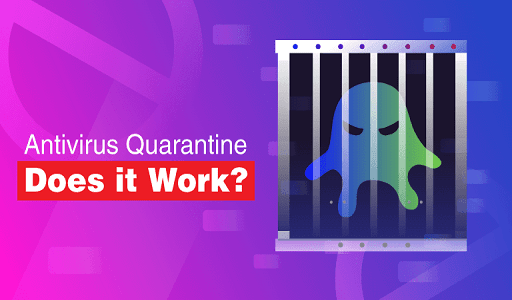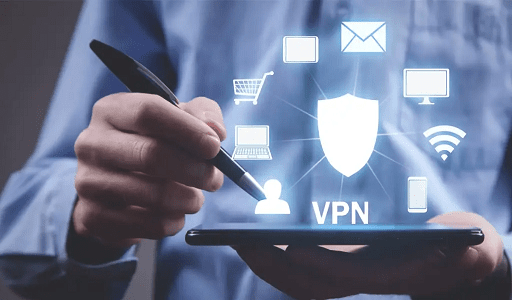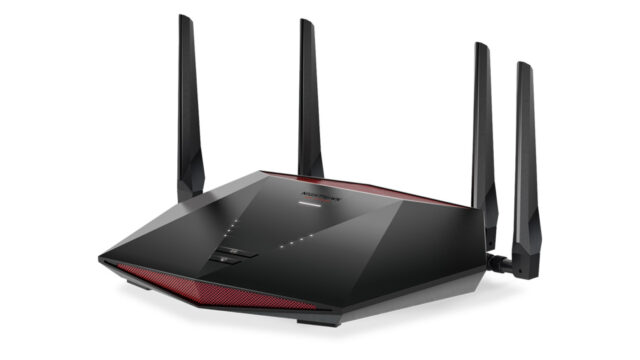No matter how diligent you are, there is a good chance that malware, often known as harmful software, may attack your device at some point in the future.
Naturally, there are methods available to combat malware and protect oneself, but what is the most effective course of action to take when your antivirus program identifies a file as malicious? Which cleaning, isolating, or deleting a virus should be done first?

Is it even possible to get rid of a Virus?
Real-time protection is a function that stops malicious software from being installed on a system. If the antivirus software that you are using is any good, it will include this capability.
By preventing the download of a file that could be harmful, for instance, and saving you the effort of having to deal with a virus, a competent antivirus program offers real-time protection and is therefore able to safeguard your computer. Nevertheless, viruses can—and frequently do—elude detection. Some tools, for example, won’t be able to detect malware if it’s buried deep within numerous layers of ZIP files; this is especially true if the software isn’t constantly updated.
Imagine for a moment that your anti-virus software did not stop you from downloading something because it detected no problems with the file. However, as soon as you unzipped a file that appeared to be legitimate, your computer began to behave strangely, including displaying pop-ups, sending strange notifications, displaying error messages, slowing down, and heating up, as well as other indications that it is infected with a virus. Under these conditions, the first thing you should do is start your antivirus software, ensure it is up to date, and then let it run a full scan of your computer before proceeding. After the process is finished, the software will most likely give you the choice to “clean” the infection from your system.
It won’t hurt anything if you let the antivirus program remove the contaminated files, and it might even help. An antivirus program may, in extremely unusual circumstances, be able to successfully remove all traces of viruses from an infected file. This is certainly helpful if you need to preserve the infected file, but if the file in issue is a Trojan virus or a worm, there is no use in cleaning it because it is dangerous in its totality and there is nothing that can be done to remove the threat.
What does it mean to put a Virus in Quarantine?
Infected files can also be placed in quarantine by your antivirus software, either at the user’s request or automatically. But what precisely does it mean to put a virus into quarantine, and when is the appropriate time to do so? First and foremost, how exactly does placing a virus in quarantine assist protect your device?
To put it another way, whenever someone tests positive for COVID-19, they are given instructions to self-isolate and go into quarantine in order to prevent the disease from spreading to other people. The situation is analogous to a computer virus. To put it another way, isolating a malicious file within a particular, secure area of your device in order to prevent the infection from spreading to other files on the device is what is meant by the term “quarantine.”
When anti-virus software places a file in quarantine, other applications cannot access the file because it is inaccessible. Even if the virus does not replicate itself across your device, simply putting the infected file in quarantine will not eliminate any infections that may be present in it. Putting the file in quarantine and subsequently removing the contamination is however an option. This choice is especially helpful in situations in which a crucial file has been corrupted, such as when a word document or a system file that is essential to the device’s operation has been compromised.
Additionally, there is always the possibility that your antivirus software incorrectly recognized a completely valid program as a virus; hence, it is sometimes more prudent to place the program in quarantine rather than completely removing it.
Now that you know this, you might be curious about whether or not it is possible to maintain a file in quarantine for an infinite amount of time. Although this may be true technically, it is always safer to remove a file that you suspect of being malicious than to retain it on your device.
How to Remove and Delete Virus from your PC
The deletion of everything is the very last resort, but it’s also likely the safest. To clarify, removing a virus does not include the same process as removing a file from which you have reason to believe it contains malware. Malware is cunning and can move to different sections of your operating system, leaving traces everywhere. Malware can also leave evidence of itself everywhere. Even if you delete the questionable file, the malicious software will almost certainly continue to reinstall itself and will keep your device from functioning properly.
It should be noted that this does not imply that computer infections cannot be removed manually; they can be, but doing so is a very complicated procedure that would involve a lot of time and effort. You probably would not be able to accomplish it correctly even if you tried, especially if you are not an expert in information technology (IT) or at the absolute least a highly adept computer enthusiast. Antivirus software is, of course, a good solution to this problem.
When your antivirus software identifies malicious software on your device, it will either immediately attempt to remove it or send you a message informing you that you have been infected. You can perform a scan of your device, as was just described, and then place any suspect files in quarantine before taking any further action. But in the end, you will most likely be required to delete the files that are causing you problems.
As an illustration, let’s imagine that you downloaded a file from a file-sharing website that you thought was legitimate, but your antivirus software failed to classify it as malware. However, when you executed the file, it installed a Trojan horse on your computer. In this case, you would need to conduct a scan with your antivirus software, and it would then remove and put the malware into quarantine for you.
The Trojan horse could potentially inflict a great deal of damage to your system in some circumstances. In other instances, the infection would cause the user to lose access to significant papers. However, in the vast majority of instances, the antivirus software would eliminate the malware and shield you from any potential cybercrime as it was intended to do.
If the infection is particularly tenacious and your antivirus program is having trouble removing it, restart your computer in safe mode and continue from there. In the event that this does not work, you have the option of running System Restore, which is a feature of Windows that allows you to return your computer to an earlier point in time or doing a complete reset of Windows.
The same can be said for mobile devices, and Android phones in particular, in this respect. There are situations in which the only thing you can do is do a hard reset of the factory settings and hope that the malware did not cause harm that is beyond repair. Remember that if you do this, you will lose all of your data if it has not been backed up anywhere else, so you should only use this method as a last resort.
Defending against an attack of Malware
Coming full circle, the subject at hand is: while dealing with a virus, is it preferable to disinfect it, place it in quarantine, or eliminate it? There is no easy solution to this problem. It is dependent on the circumstances as well as the kind of malware that you are working with. In any event, in order to safeguard both your device and the information stored on it, you should investigate each of the three possibilities and, if none of them prove successful, see an expert.
All of this highlights how critical it is to ensure that each of your devices is equipped with reputable antivirus software. You won’t need to shell out a significant sum of cash in order to keep yourself safe, thank goodness. In point of fact, there is a wide variety of free possibilities from which to pick.
Would you like to read more about Quarantine or Delete Virus-related articles? If so, we invite you to take a look at our other tech topics before you leave!









